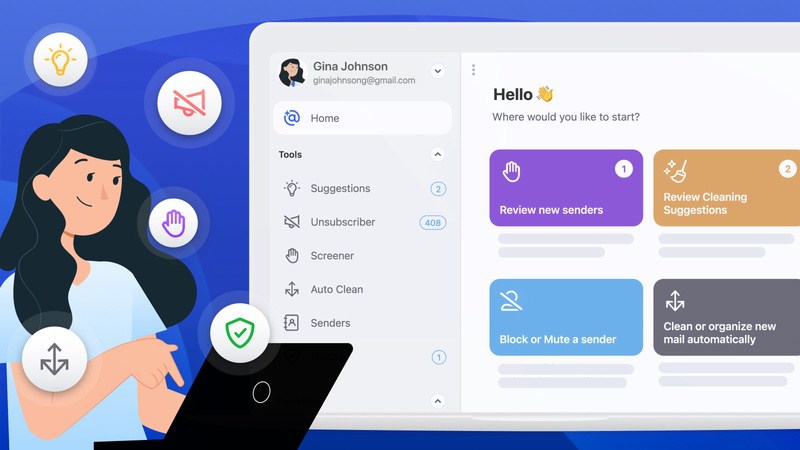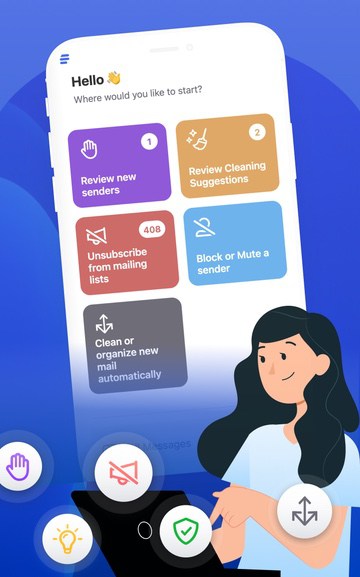What are Formal Emails?
Formal emails are those that follow specific format rules regarding email etiquette. Often, they are written to authority figures who expect formal communications. For example, communicating with your boss might come with formal expectations.
Formal emails use polite terminology and are incredibly respectful. The specific format and rules are built to avoid miscommunications. They also help solidify your written communication skills.
Email Structure Tips For Writing A Formal Email [Step-By-Step]
Below, you’ll find a four-step writing process that will work for any formal email format:
Step One: Writing the Subject Line
The email subject line is what the reader first reads when browsing their inbox. Formality demands that the subject is clear in what the email contains.
Your subject line should be incredibly specific when possible. For example, if you want to announce an upcoming meeting, mention the time and date of the meeting in the subject line.
The subject line should not include casual conversation words like “Hey [name].” Instead, the subject should focus on what the email is about, nothing else. Here are some examples:
- Staff Meeting on August 3rd at 9:30 AM.
- Quarterly Results - Please Review by August 3rd EOD.
- Requesting Vacation Time From September 30th to August 3rd.
Step Two: How To Start A Formal Email [Introduction]
The email opening lines you send out should follow a specific format. In almost all cases, this starts with “Dear,” followed by the professional title, first name, and last name of your reader.
Where you are emailing multiple groups, use their general title (Dear Employees). If you are sending this to a mixed group, “To Whom It May Concern” is an acceptable alternative.
Once you get through the opening, your next words depend on the purpose of your email. If you are sending a regular report, you’ll want to stick to the basics. Saying “Here is the company’s quarterly report, let me know if you have any questions or concerns” is enough in most cases.
If the other group doesn’t know you, start with an introduction that includes your name and professional title. Always start with introducing yourself in the email when the other party doesn’t know you.
Regardless of the purpose of your email, you’ll want to be clear on the reason for it. The introduction should clarify those details using polite language.
Step Three: Writing Your Email Body
The email body is your opportunity to provide further details about your request. What you write here will often change depending on the reader’s familiarity with what you are sending.
For example, if you are sending a regular quarterly report on your company’s profits, you might not need to elaborate on the subject. If the readers of your email regularly receive, you might clarify a few minor details, but nothing major.
If the reader has less information on the subject of your email, take the time to explain it to them. Remain respectful and clear when providing this information.
For example, if you want to inform your readers about a new law, you might explain it using simple terms. However, a detailed PDF including more information would be appropriate here.
When writing the body, be sure to limit the topic to one area. For example, a business email making multiple announcements might seem confusing. Keeping your emails simple makes you sound knowledgeable.
Step Four: How To End A Formal Email [Conclusion]
The conclusion of your email should follow a specific format. The email closing should include a specific call to action, ways to contact you for more information, and a professional email signature.
Even informational emails can benefit from a call to action. For example, you might make an announcement and ask your employees to read the attached PDF for details. Next, you might offer a follow-up email if they have questions.
By providing clear steps to your reader, it creates an environment of clarity and professionalism. The more clear you can make these steps, the more time you can save for you and the reader.
From there, be sure to close out the email using appropriate language. Terms like “sincerely,” “respectfully,” and “best regards” are all excellent ways to end it. From there, you'll want to include your name, professional job title, and contact information for any inquiries.
Formal Email Example
To see these four steps in action, check out our formal email example below:
Subject: Staff Meeting Regarding Cybersecurity Changes - August 10, 2022 at 1:30 PM
Dear Employees of Enterprise Solutions,
We have a scheduled meeting regarding the latest anti-piracy security measures on Wednesday, August 10, 2022. Please arrive five to ten minutes early to secure a spot and be ready for these important updates.
As you know, Dr. Tim Morgan, cybersecurity expert, joined our team in Q2 of 2021. Since then, he has identified areas of improvement we will implement in Q1 of 2023, starting January 1st of next year.
He will be discussing operational plans we need to fulfill by the end of the year to support and prepare for these changes. See the attached PDF for topics we will address during the meeting.
For more information, you may contact Associate Director Susan Collins at 999-999-9999 or at s.collins@enterprise.org. If you cannot attend, please reply to this email and we will schedule a follow-up meeting for the following week.
Sincerely,
Aaron Steele
Human Resources Coordinator
Enterprise Solutions
999-999-9999
a.steele@enterprise.org
How Clean Email Can Help Your Inbox Look Professional
When writing a formal email, it helps to have a clear head. It’s hard to get that clear head with a cluttered inbox. That’s why you need Clean Email.


Clean Email is an automated cleaning service that identifies your most important emails using context clues. Our tools identify what emails are important based on the rules you set. This allows you to control your inbox using automation.
Email clients like Google or Yahoo do not have effective tools for navigating your emails. Clean Email solves this problem by integrating with your current inboxes. This way, you won’t have to create a new email to avoid the wall of spam that comes with being on the internet.
Clean Email’s Auto Clean feature allows you to establish rules for our software to follow. For example, you might choose to automatically clear all emails that are a week (or a day) old. Other excellent features of Auto Clean includes archiving emails and trashing social notifications.
For stubborn emails that won’t go away, you can use the Clean Email Unsubscriber Tool. This tool identifies all of your mailing list emails and identifies them on a simple list. By clicking the “pause” button, you can stop these temporarily. For a permanent removal, you can click the “unsubscribe” button.
So rather than waste hours of your day by finding unwanted emails and unsubscribing individually, you can do this with a single click. You’ll find that the saved time will mean less stress for you, allowing you to focus on important emails.
If you want to create excellent formal emails, it helps to have an inbox that is clear. Giving this off to an automated tool gives you more time to produce and focus. After all, it’s proven that a clean environment can help you (and your inbox) feel like new.
Formal Email FAQs
What Should You Not Do In A Formal Email?
When writing formal emails, it's best to avoid treating the reader like your friend. Treat them like a professional and use formal language. Starting your email with “hey Tim” is not a good first impression.
Should You Add an Email Signature In Your Formal Email?
Yes, a professional email signature can help your formal email appear more professional. Include your name, job title, and contact information in the signature.


